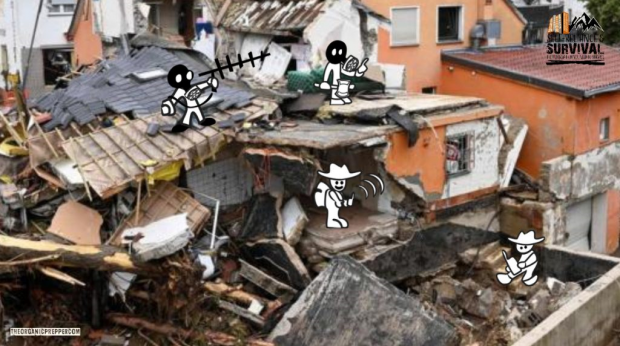
Breaking News
 2 Hours of Retro Sci-Fi Christmas Songs | Atomic-Age Christmas at a Snowy Ski Resort
2 Hours of Retro Sci-Fi Christmas Songs | Atomic-Age Christmas at a Snowy Ski Resort
 Alternative Ways to Buy Farmland
Alternative Ways to Buy Farmland
 LED lights are DEVASTATING our bodies, here's why | Redacted w Clayton Morris
LED lights are DEVASTATING our bodies, here's why | Redacted w Clayton Morris
Top Tech News
 Travel gadget promises to dry and iron your clothes – totally hands-free
Travel gadget promises to dry and iron your clothes – totally hands-free
 Perfect Aircrete, Kitchen Ingredients.
Perfect Aircrete, Kitchen Ingredients.
 Futuristic pixel-raising display lets you feel what's onscreen
Futuristic pixel-raising display lets you feel what's onscreen
 Cutting-Edge Facility Generates Pure Water and Hydrogen Fuel from Seawater for Mere Pennies
Cutting-Edge Facility Generates Pure Water and Hydrogen Fuel from Seawater for Mere Pennies
 This tiny dev board is packed with features for ambitious makers
This tiny dev board is packed with features for ambitious makers
 Scientists Discover Gel to Regrow Tooth Enamel
Scientists Discover Gel to Regrow Tooth Enamel
 Vitamin C and Dandelion Root Killing Cancer Cells -- as Former CDC Director Calls for COVID-19...
Vitamin C and Dandelion Root Killing Cancer Cells -- as Former CDC Director Calls for COVID-19...
 Galactic Brain: US firm plans space-based data centers, power grid to challenge China
Galactic Brain: US firm plans space-based data centers, power grid to challenge China
 A microbial cleanup for glyphosate just earned a patent. Here's why that matters
A microbial cleanup for glyphosate just earned a patent. Here's why that matters
 Japan Breaks Internet Speed Record with 5 Million Times Faster Data Transfer
Japan Breaks Internet Speed Record with 5 Million Times Faster Data Transfer
Overwhelmed by Ham Radio?

Every prepper knows that ham radio is an important part of surviving the aftermath of a disaster. Communications are essential to coordinate meet-ups, adapt plans, and learn more about the situation that's going on. With the things that are going on in the world right now, emergency communication could soon be more important than ever.
But what with the testing, licensing, and all the equipment to choose from, it can seem downright overwhelming.
We've got you covered with our new book, The Prepper's Guide to Post-Disaster Communication: A Simplified Guide to Ham Radio. Aden Tate has made the entire process so much easier – and no, you don't need a degree in physics or electrical engineering to get set up. His adorable illustrations, witty wordplay, and clear, concise explanations make this book a friendly, educational read.
What's in the book?
Here's what the 151-page book includes:
Introduction
Why Post-Disaster Comms?
The Physics Behind Ham Radio
Watt's That
Don't Hit Me with That. It Megahertz.
I Liked That Band Before It Was Cool
Wavelength
Volt Aw Yoo Talking About
Penalty. Interference.
Resonance
Standing Wave Ratio
Propagation
Ground Wave Propagation
Surface Waves
Direct Waves
Reflected Waves
Sky Wave Propagation
The Skip Zone
The Radio Frequency Spectrum
What is High Frequency (HF)?
Very High Frequency (VHF)
Ultra-High Frequency (UHF)
What is FRS?
What is GMRS?
MURS
What are the Different Types of Stations?
Handheld
Portable Stations
Mobile Stations
Base Stations
The Prepper and CB Radio
The Prepper and Software Defined Radio
Field Telephones
Digital vs Analog
Improving Your Disaster Resilience by Getting Others Involved in Ham Radio
The Logistics of Emergency Ham Radio
The Radio Book
The Radio Binder
How to Know Which Radio to Pick?
Keeping Your Transmissions Secure
Why Morse Code?
How to Triangulate a Signal
The Prepper and Antennas
Anonymous Antennas
More Info on Directional Antennas
Making or Choosing an Antenna
How to Make a Field Expedient Antenna
How to Repair a Broken Antenna
Using Your Radio on the Move
How to Keep Your Radios Running Off the Grid
Adding a Radio to Your BOB
Vehicular Radio Kit
Radio Fieldcraft
What Intelligence Reports Look Like
What To Do if Bad Guys Come
Evasion
The LRSU BOB
The Alternate Operations Base
Operations Consideration
How Different Environments Will Affect Your Radio Transmissions
Intelligence Gathering
The Underground Church and Radio
Gray Man Radio for EDC
Defeating Censorship
EMP Radio Protection
Radio Games
NOAA Weather Broadcast Frequencies
Shortwave Broadcasts of Interest to the Prepper
International Shortwave News Broadcasts
Morse Code
Morse Code Abbreviations and Radio Abbreviations
International Phonetic Alphabet

 $100 SILVER CONFIRMED?
$100 SILVER CONFIRMED?

